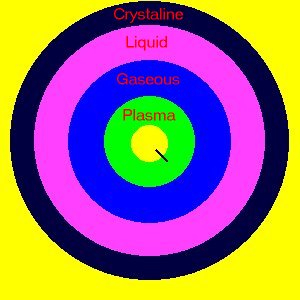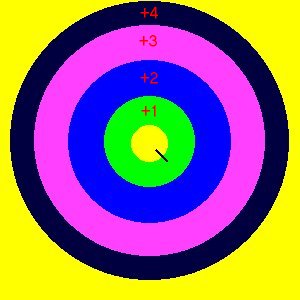

Here is MoQ wimple model N with the attributes of the inorganic layer filled in. As we can see by comparing this model to the one we constructed of Causal Factor Time, plasma starts as a single point in space. In its extreme state, plasma is unable to form even the most simple relationships needed to form atoms. Plasma seems to be a stream of excited electrons.
In the next layer, the gaseous layer, relationships can now form in linear fashion. Atoms now form in this layer. In the liquid layer, more complex relationships allow molecules to form. And in the outer crytaline layer, much more complex relationships allow the formation of all solids in existence.
In order to label our different layers, we need a simple yet comprehensive way of identifying each layer, and so from now on, the inorganic layer will be called N, and each layer within model N will be called N (1,2,3,4) depending on which layer we are describing. For example, the plasma layer will be called N(1).
If I were to take layer N(1) and put it into another model, and if I knew how the attributes of four-ness should be filled in for plasma, then each of these layers would be called N(1)-(1,2,3,4). In this way, we are able to accurately label the MoQ wimple model in a simple and easy fashion to find the level we want to work in.

One causal factor in layer N is aggregative cohesiveness. This seems to be the way matter clumps together and forms solidness in the universe. In the model above, we have labeled each layer in terms of how much cohesive aggregativeness each contain within themselves. This could also be seen in terms of value. Starting with layer N(1) we see it has an aggregative cohesiveness of +1, or one point in space. This means there is no chance of any relationships forming at this sublevel.
Moving through the layers, we see how the cohesive aggregativeness values increasingly complex relationships, culminating in the formation of solid matter.